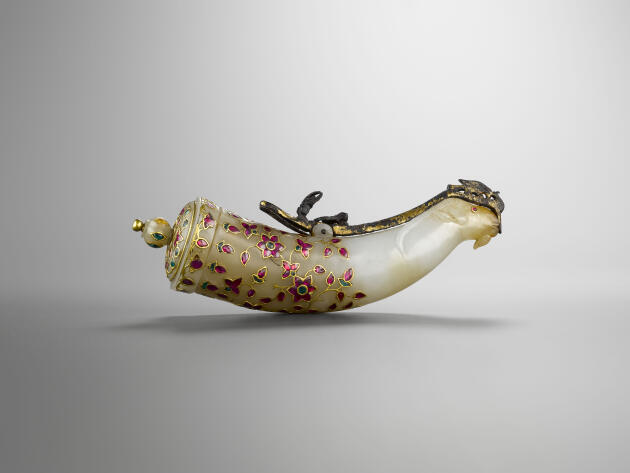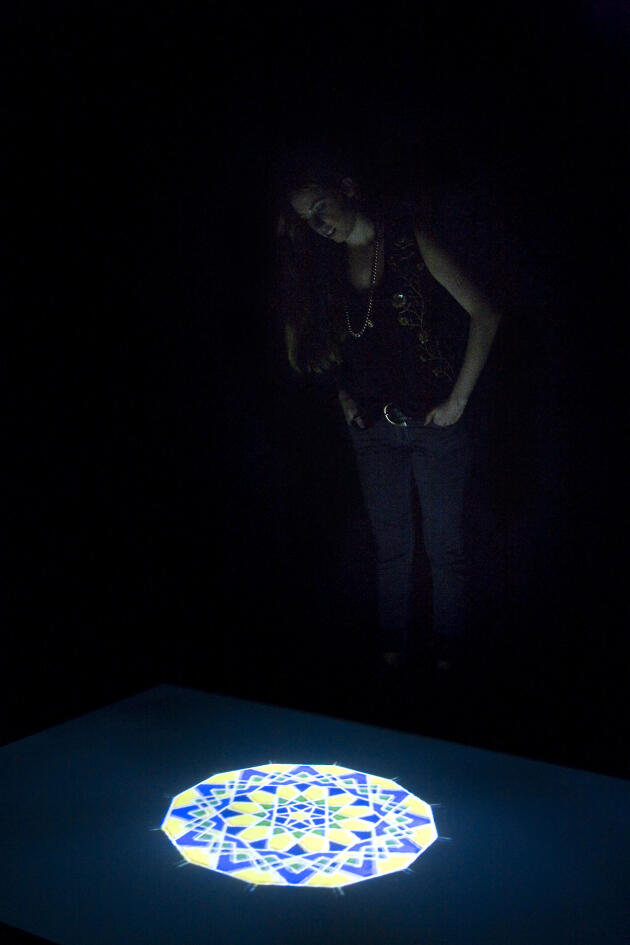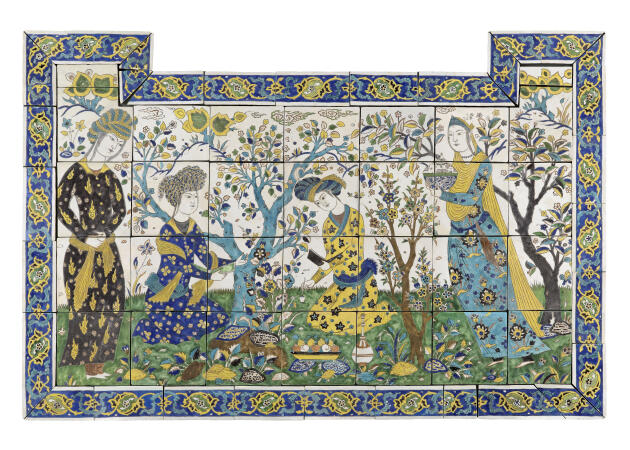Emmanuel Macron had announced it on October 2, 2020, during his speech at Les Mureaux: to fight against “Islamist separatism”, initiatives in the fields of culture, history and science should be encouraged in order to “Do not leave knowledge and understanding of Islam as a religion, of the civilization it carries, of its contribution to our country and our continent, to ideological and exclusively political debates”.
Organized in eight months at the request of the Prime Minister, the eighteen exhibitions ” Islamic arts, a past for a present », Carried by the Louvre Museum and the Réunion des Musées Nationaux – Grand Palais (RMN-GP), are in line with this desire. At a time when Islam arouses strong tensions in French society, this demonstration « is a direct answer, estimates Jean Castex as a preamble to the event, to all hate speech and anxiety-inducing temptations, insofar as it reminds us that the dialogue of cultures has never ceased in our history and should inspire us for the present time, so essential to mutual understanding ”.
Secular ties
The ambition, says the president of the Louvre, Laurence des Cars, is to “To extricate oneself from the traps of immediacy to look at the long term and become aware of what world heritage owes to Islam, which has nourished Western culture”. By showing that “The exchanges were more numerous than the conflicts, she continues, this exhibition makes the bet of the intelligence and the heart; in a fragmented era, she wants to reweave ties ”.
In fact, the works highlighted in Figeac, Mantes-la-Jolie, Rouen, Tourcoing or Blois, from November 20 to March 27, 2022, will not fail to dazzle visitors. Rock crystal ewers, illuminated manuscripts, shimmering ceramics, silky fabrics … These objects, two hundred and ten in total, sixty of which are on loan from the Louvre Museum and one hundred and fifty from regional funds, to which are added eighteen contemporary creations, go against many received ideas: no, Islamic civilization does not refuse secular art, any more than human figuration. No, Islam’s encounter with France is not recent.

Present in the royal collections then transferred to the Louvre when it was created in 1793, the works and artefacts attest to this permanent dialogue between East and West. “The links between Islam and France are secular and complex, underlines Ghaleb Bencheikh, president of the Fondation de l’Islam de France, partner of the event. Imbued with aversion and fascination, admiration and repulsion, conflict and alliance, these links are to be assumed and lived serenely. “ A serenity facilitated by the historical and artistic approach, which helps to better understand the subtlety of the facts. Hence the multiplication, in recent years, of initiatives that go in the same direction as that of the Louvre.
A flammable subject
Doctor in the history of contemporary Islam and founder of the French Academy of Islamic Thought, Jamel El Hamri has just set up, with ten young people from Epinay-sur-Seine, a traveling exhibition entitled « The History of Islam and Muslims in France (720-2021) ”: The young professor insists on the virtues of these approaches. “The French are passionate about history. To avoid head-on exchanges where everyone stands on their own truths, it is imperative to invest in the beautiful, in history, to highlight these little-known aspects of the history of France. Today, we must tackle the affective dimension of these subjects, by proposing a vision that soothes and unites. ”

However, organizing demonstrations around Islam still remains a challenge in France, as this subject is perceived as flammable. The Franco-American historian John Tolan recently experienced this. This history professor at the University of Nantes heads the project ” The European Qur’an », Placed under the aegis of the European Research Council. In this context, an exhibition on the place of the Koran in the intellectual, religious and cultural life of Europe was to be set up. ” Most the museum institution where the event was to take place withdrew for fear of the possible violent reactions that this theme could have provoked ”, explains the medievalist. “Following the assassination of Samuel Paty, there was a paradoxical movement, notes John Tolan. On the one hand, it was proclaimed that freedom of expression was essential and that everything should be done to protect it; on the other, fear and self-censorship have gone up a notch. “ The academic is still looking for a place to host this project.
Beauty in the face of hate
In the case of the exhibitions co-organized by the Louvre and the RMN-GP, potential blockages were removed thanks to an upstream dialogue with local elected officials, mosque rectors, museum curators, all aware that in the face of fundamentalism, the security response is not enough. With the aim of allowing French people of foreign origin to come to terms with their multiple inheritances. The Minister of Culture, Roselyne Bachelot, also emphasizes “The pride that our compatriots from these regions of the world” will not fail to feel in front of these prestigious works. “We need to have a national novel that is as inclusive as possible, which further highlights the historical depth of the presence of Islam on French territory”, confirme Jamel El Hamri.

In fact, the view on the arts of Islam has evolved a lot. President of the Institut du monde arabe (IMA), also a partner of the Louvre exhibition, Jack Lang remembers that the Islamic collections of the Parisian museum, in the years 1970-1980, were piled up in reserves, far from the eyes of the public. This is why the former minister sees in the current demonstration “A consecration for Islamic art”. “A movement is underway, he enthuses. In the face of hatred and ignorance, the truth of things appears in all its brilliance and beauty. “
Bringing to an exhibition – multiplied in eighteen places and accompanied by an ambitious educational system – the objective of calming the tensions crystallized by Islam is obviously a challenge. Some would say that it is futile to summon a glorious past and ignore the current crisis. However, specifies Ghaleb Bencheikh, “It is not a question of praising a mythical golden age, but of repairing the mutilations of history to make work of pacification “.
A civilization cannot be reduced to its masterpieces or its horrors: the reality is more contrasted. Faced with the immense societal challenge posed by the relationship with Islam, we should certainly not expect a cultural event to abolish all divisions. But it offers, in the surrounding hubbub, an aesthetic and historical parenthesis that allows you to take a little height. The possibility of a meeting.
–


